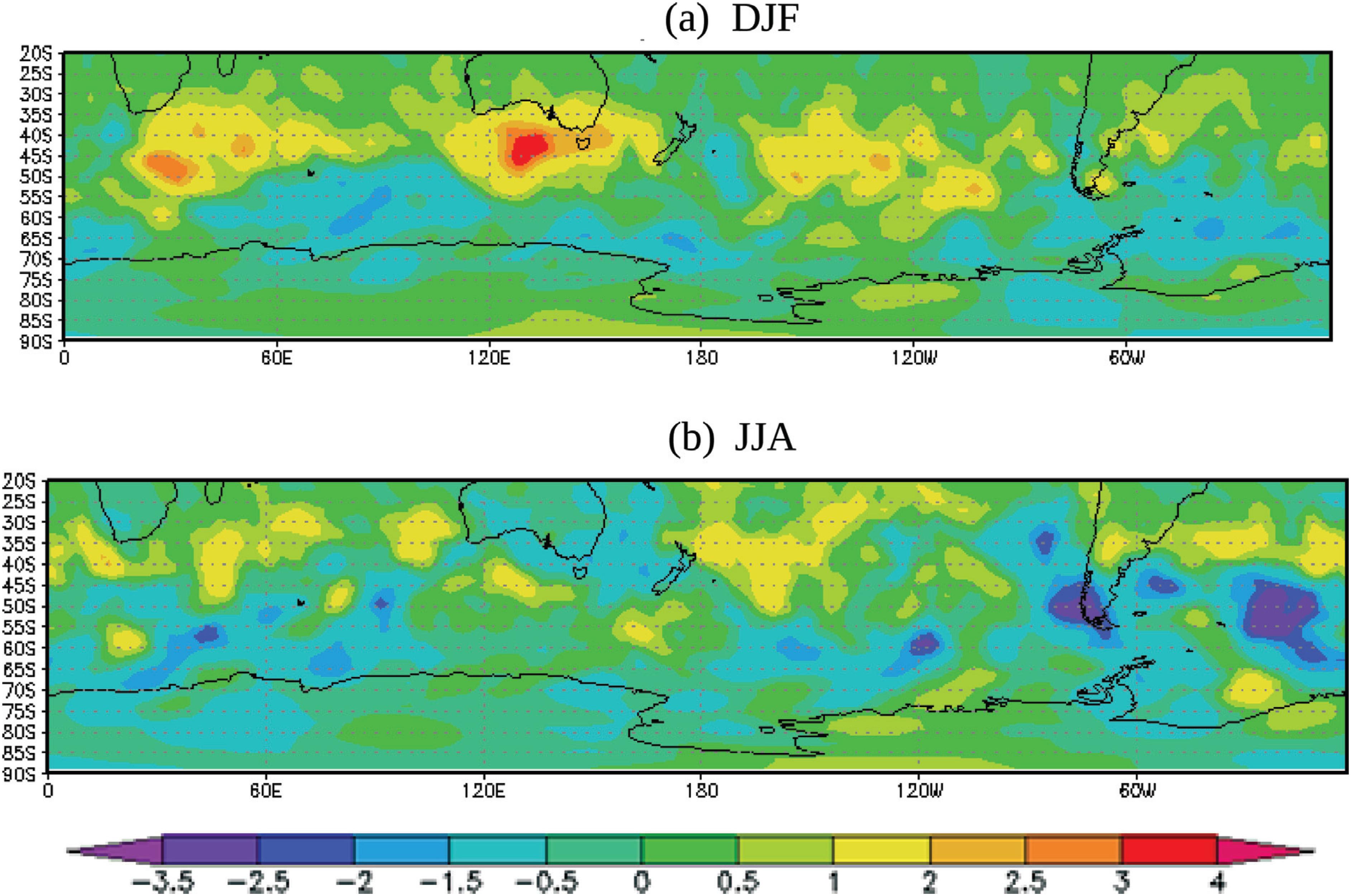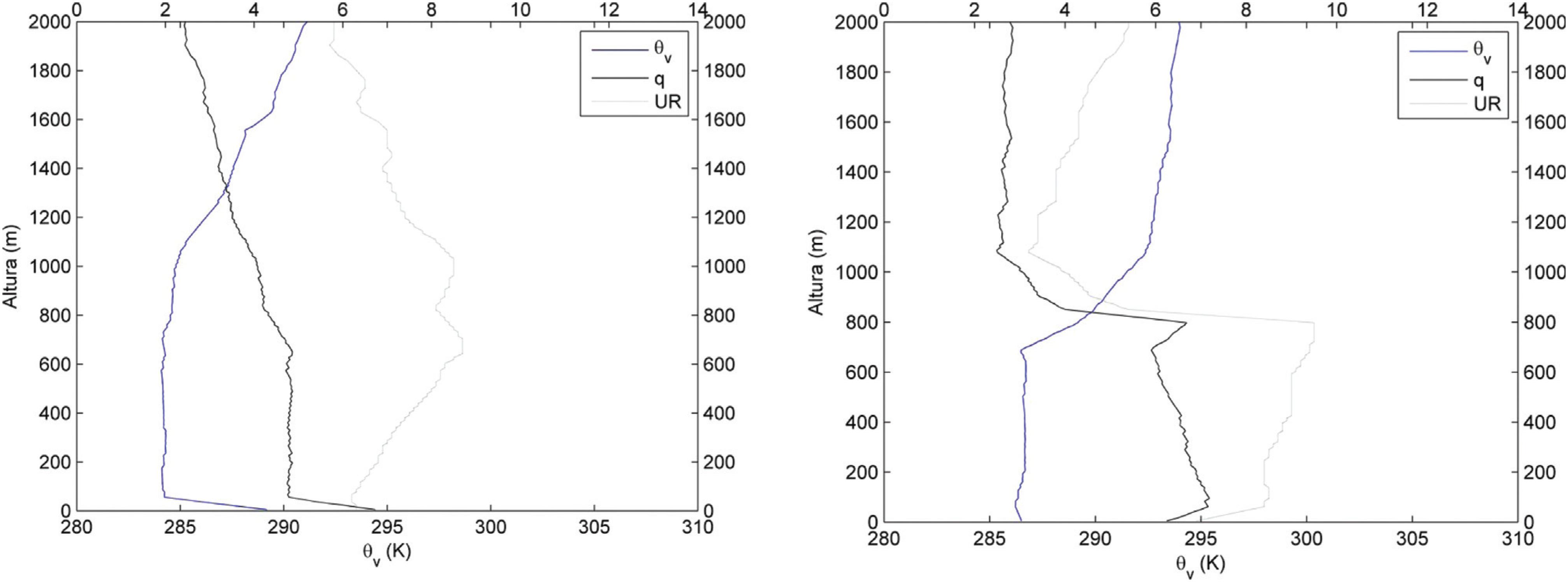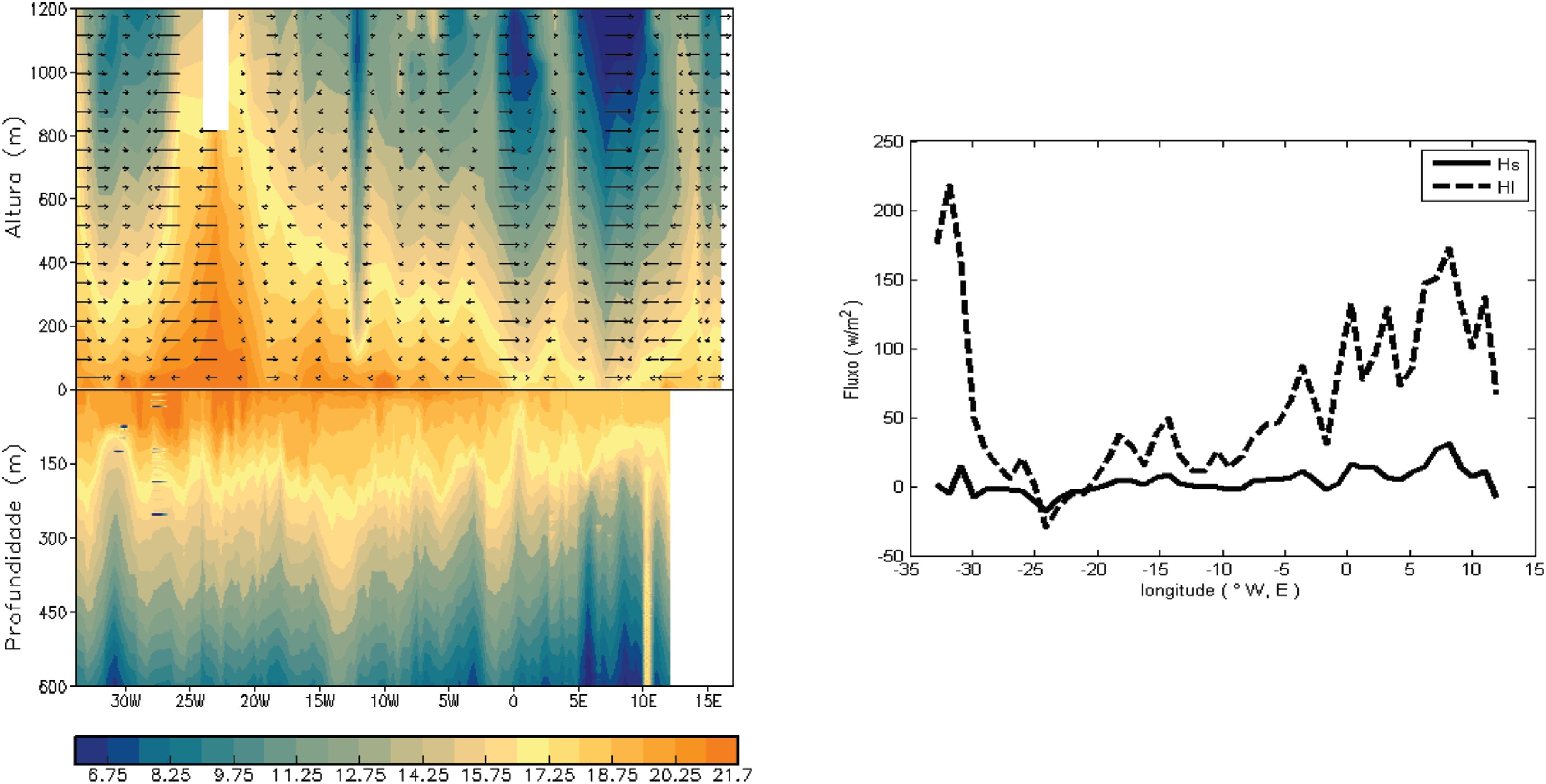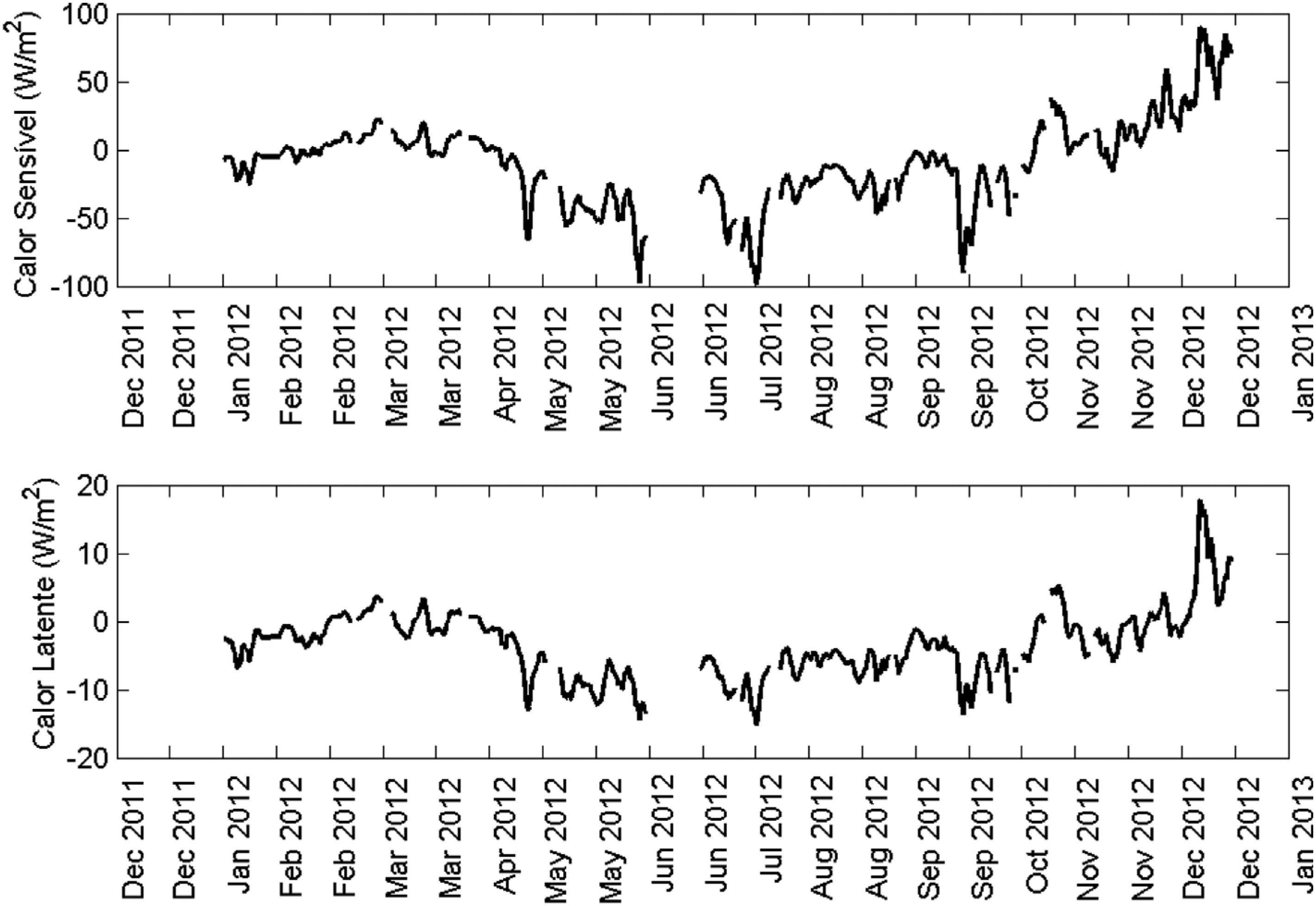Abstract
In a general view, the interaction of the ocean with the atmosphere in regions of intense oceanic mesoscale activity (oceanographic fronts, meanders and eddies typical of spatial scales of about 100-500 km and time scales of about 2-3 months) presents a positive correlation between the sea surface temperature (SST) and meteorological variables such as the stability of the Marine Atmospheric Boundary Layer (MABL), the wind intensity and the heat, momentum and gas fluxes between the ocean and the atmosphere. This suggests that the ocean forces the atmosphere at the spatial and temporal scales related to the oceanic mesoscale. Mostly based on observational data, this work presents a brief scientific revision on the impact of the mesoscale structures present in the Southwestern Atlantic Ocean on some components of the coupled ocean-atmosphere system that, in certain aspects, impact the weather and the climate of the adjacent continental regions of South America. It is also included in this article a brief review of the state of the art knowledge about the oceanic part of the South Atlantic Convergence Zone. This paper presents the general oceanographic characteristics of the study area, including some aspects about the South Atlantic circulation and variability. Recalling the fact that the subtropical South Atlantic is a Storm Track region, this paper also discusses the impacts of the SST gradients of the Southwestern Atlantic Ocean on the transient atmospheric systems that frequently cross the region. In addition, the paper discusses novel indications that the oceanographic processes occurring at the southern coast of Brazil in wintertime have a marked impact on the MABL modulation over the southern Brazilian continental shelf. The paper reports past and present indications that the ecological processes caused by the atmospheric and marine climate variability of the southern coast of Brazil impact the spawning and catches of the Brazilian sardine (Sardinella brasiliensis), one of most important renewable marine resources of Brazil. The paper finishes presenting some of the current observational efforts of Brazil aiming the collection of marine meteorology data in the South and Equatorial Atlantic Ocean. These efforts intend to widen our understanding of the ocean-atmosphere coupling at the synoptic and climatic scales as well as the role of the Atlantic Ocean in controlling the heat, momentum and carbon dioxide fluxes to the atmosphere.
Keywords:
air-sea interaction; SST; marine atmospheric boundary layer; SACZ; Southwest Atlantic Ocean; in situ data

 Fonte:
Fonte: 




